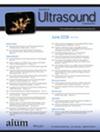Fetal Pulmonary-Artery Doppler Dynamics in Preeclampsia
Abstract
Objective
To investigate the predictive value of fetal main pulmonary artery (MPA) Doppler parameters, including acceleration time (AT) and the acceleration time-to-ejection time ratio (PAT/ET), for composite adverse pulmonary outcomes (CAPO) in pregnancies complicated by preeclampsia.
Methods
This prospective case-control study included 120 singleton pregnancies (60 with preeclampsia and 60 normotensive controls) followed at Ankara Etlik City Hospital between March and June 2025. Doppler ultrasonography was performed using a Voluson E10 system. MPA Doppler waveforms were recorded in an axial or sagittal thoracic view, and PAT/ET and AT were calculated from three averaged cardiac cycles. CAPO was defined as the presence of at least one of the following: respiratory distress syndrome (RDS), transient tachypnea of the newborn (TTN), need for CPAP or mechanical ventilation, or NICU admission.
Results
The preeclampsia group exhibited significantly lower PAT/ET ratios (0.180 ± 0.09 vs 0.240 ± 0.07, P < .001) and shorter AT (44.1 ± 18.0 ms vs 57.1 ± 13.2 ms, P < .001), along with higher MPA PI and RI values. CAPO incidence was significantly higher in the preeclampsia group (31.6 vs 11.6%, P < .001). ROC analysis demonstrated that PAT/ET <0.180 predicted CAPO with 78.5% sensitivity, 63.0% specificity, and an AUC of 0.760. Similarly, AT <45.5 ms yielded 75.3% sensitivity, 63.0% specificity, and an AUC of 0.749.
Conclusion
Fetal MPA Doppler parameters, particularly PAT/ET and AT, may serve as noninvasive predictors of neonatal respiratory morbidity in preeclamptic pregnancies. Incorporating these indices into routine antenatal surveillance could support timely perinatal interventions and improve neonatal outcomes.

 求助内容:
求助内容: 应助结果提醒方式:
应助结果提醒方式:


